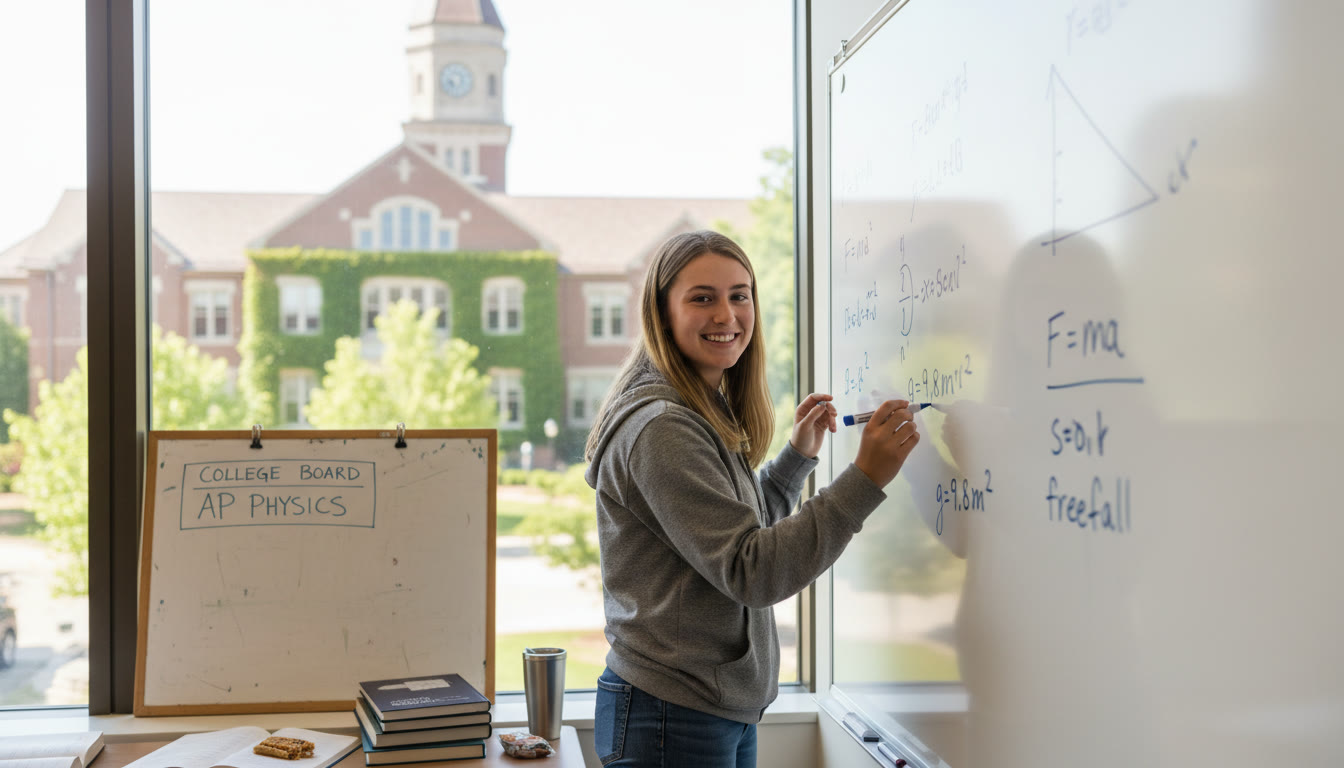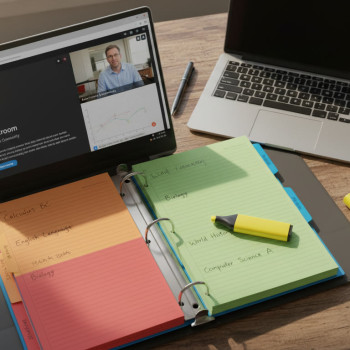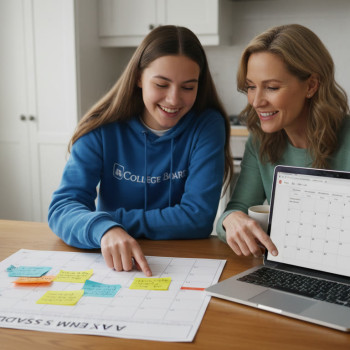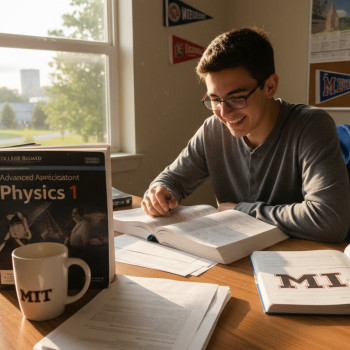Why AP Mechanics Matters — For Students Aiming at Tippie or Engineering
If you’re a student in Iowa thinking about the University of Iowa — whether you’re eyeing Tippie’s business programs, an engineering major, or keeping your options wide — signing up for AP Physics C: Mechanics can be a smart move. It’s one of those courses that signals academic grit and quantitative readiness. For future engineers it demonstrates calculus-based physics proficiency; for Tippie applicants it showcases analytical thinking and willingness to challenge yourself. In short: AP Mechanics is a flexible credential that helps your academic story, not just your transcript.

How Colleges — and You — Should Think About AP Mechanics
Colleges value APs two ways: as evidence of academic preparation and as potential college credit or placement. For engineering applicants, AP Physics C: Mechanics is strongly relevant; it’s essentially the first semester of college-level physics with calculus. For Tippie (or other business programs), the course shows you can handle quantitative, logical reasoning tasks that translate well into economics, finance, operations, and analytics coursework.
Remember: AP performance is part of a larger application narrative. Strong grades, compelling essays, meaningful extracurriculars, and teacher recommendations complete the picture. AP Mechanics doesn’t stand alone — but it can be a powerful chapter in your story.
What AP Physics C: Mechanics Actually Covers
Understanding what’s covered helps you prioritize. AP Mechanics is calculus-based and usually includes seven commonly taught units. Below is a compact view that you can pin to your wall or phone when planning.
| Unit | Core Topics | Typical Exam Weighting |
|---|---|---|
| Kinematics | Position, velocity, acceleration; 1D and 2D motion | 10%–15% |
| Force and Translational Dynamics | Newton’s laws, free-body diagrams, friction | 20%–25% |
| Work, Energy, Power | Work-energy theorem, conservative forces | 15%–25% |
| Linear Momentum | Conservation of momentum, collisions | 10%–20% |
| Torque and Rotational Dynamics | Rotational kinematics, torque, moment of inertia | 10%–15% |
| Energy and Momentum of Rotating Systems | Rotational energy, angular momentum conservation | 10%–15% |
| Oscillations | Simple harmonic motion, pendulums, energy in oscillators | 10%–15% |
How This Maps to Engineering and Tippie
- Engineering majors: You’ll reuse nearly everything — mechanics fundamentals underpin statics, dynamics, and many core engineering classes.
- Tippie/business majors: While not directly required, the quantitative reasoning and calculus fluency you gain are highly valuable in economics, data analytics, and finance courses.
- General college credit: Earning a high AP score may let you skip introductory physics, freeing space in your first-year schedule for advanced courses, research, or internships.
How To Build a Realistic, High-Impact Study Plan
One of the biggest traps students fall into is treating AP prep like cram season. AP Mechanics rewards steady practice and pattern recognition. Below is a seasonal study path to make the most of your school year and exam calendar.
Year-Long Roadmap (August to May)
- August–October (Foundation): Focus on kinematics and basic calculus routines. Build a portfolio of solved problems and one-page formula sheets for each topic.
- November–January (Depth): Tackle dynamics, work-energy, and momentum. Begin timed, low-stakes practice multiple-choice sets once a week.
- February–March (Integration): Rotate through rotational dynamics and oscillations. Start mixed-topic problem sets and practice creating clear free-response outlines.
- April–Exam (Polish): Simulate the hybrid digital exam conditions. Practice multiple-choice sections back-to-back and handwrite free-response answers in a booklet to mimic the real test format.
Weekly Rhythm
- 3–4 focused study sessions (50–90 minutes each).
- 1 mixed-topic practice block (timed).
- 1 lab or hands-on experiment review (even a small home experiment helps build intuition).
- Weekly reflection: write a one-page summary of what made sense, what didn’t, and one problem you’ll revisit until you master it.
Practical Exam Strategies That Actually Work
Knowing physics is one thing; scoring well on the exam is another. The exam rewards clarity of thought, efficient mathematics, and smart time management.
Multiple-Choice Tips
- Read the question once to identify the asked quantity, then scan given data. Don’t perform calculations until you’re certain of what’s asked.
- Estimate before you calculate — a quick sign check or magnitude estimate helps catch algebra mistakes.
- If stuck, eliminate obviously wrong choices and use dimensional analysis to test options.
Free-Response Tips
- Start with a one-sentence plan: state the physical principles and the steps you’ll use.
- Show intermediate steps and units. Partial-credit answers often come from correct reasoning even if the arithmetic slips.
- Label diagrams and axes clearly; a clean, correct diagram can earn substantial points.
Sample Weekly Study Schedule (8 Weeks Before Exam)
| Week | Focus | Practice | Deliverable |
|---|---|---|---|
| Week 8 | Kinematics + Calculus Routines | Timed MC set (30 min) | One-page formula and concept sheet |
| Week 7 | Forces and Newton’s Laws | 2 FRQs on dynamics | 3 solved free-response outlines |
| Week 6 | Energy and Work | MC + lab data analysis | Short experimental report |
| Week 5 | Momentum and Collisions | Mixed-topic timed set | Reflective error log |
| Week 4 | Rotational Dynamics | FRQs on torque/rotation | Diagram-heavy cheat sheet |
| Week 3 | Oscillations + Review | Full-length practice MC | List of weakest topics |
| Week 2 | Mixed Practice | Full exam simulation | Timed diagnostic report |
| Week 1 | Polish and Rest | Light review, quick MCs | Relaxed mind and exam checklist |
Active Study Techniques: Learn Like an Engineer
Instead of passively reading notes, adopt engineering-style habits: model, test, revise.
- Build mini-models: bounce a rubber ball and time its motion; sketch the forces. Translating theory to a tiny experiment cements intuition.
- Teach a concept: explain conservation of energy to a friend or family member in simple terms — if you can teach it, you own it.
- Backsolve: start from an answer and work backward to see which assumptions must be true. This uncovers hidden constraints in a problem.
Example: Translating Physics to Business Thinking
For students headed to Tippie, try this exercise: take a physics idea like conservation of momentum and map it to business contexts — for instance, how momentum in a marketing campaign might preserve ‘brand velocity’ unless acted on by opposing forces (competition, market friction). These analogies sharpen both conceptual understanding and the ability to communicate quantitative thinking in essays and interviews.
The Laboratory Component — Why It’s More Than a Requirement
AP Mechanics includes a laboratory component where you gather and analyze data. Colleges value this because labs teach experimental design, data interpretation, and scientific communication — all skills that show up in first-year engineering and business analytics courses.
- Document experiments carefully: your lab notes can double as evidence of sustained quantitative work in applications.
- Practice simple error analysis: discuss uncertainty and why it matters — admissions officers notice thoughtful scientific reasoning.
How Sparkl’s Personalized Tutoring Fits Naturally Into Your Plan
Preparing for AP Mechanics isn’t just about practice problems; it’s about targeted guidance where you need it most. That’s where personalized tutoring like Sparkl can fit in smoothly. Sparkl offers 1-on-1 guidance, tailored study plans, and expert tutors who can help you pinpoint weak spots — whether that’s rotational dynamics or free-response writing. Their AI-driven insights can track your progress, highlight patterns in your mistakes, and suggest focused practice so your study time becomes more efficient.
Use Sparkl for a few high-value interventions: a diagnostic session to build a study plan, periodic check-ins to keep momentum, and a mock-exam review that focuses on feedback for the real test. When done right, tutoring complements your classroom work and shows up as improved confidence on test day.
Time Management and Mindset: The Unsung Heroes
High scorers on AP exams share two non-technical traits: disciplined time management and resilient mindset. You’ll need both to juggle homework, other APs, extracurriculars, and college planning.
Time Management Tools
- Block scheduling: dedicate specific blocks for physics so it becomes a steady habit, not an afterthought.
- Two-minute rule for small tasks: if reviewing a quick concept or checking a formula takes less than two minutes, do it immediately to maintain momentum.
- Weekly review hour: reflect on mistakes and update your error log. Small corrections compound into big improvements.
Mindset Practices
- Practice productive failure: treat mistakes as experiments with diagnostic value.
- Celebrate micro-wins: mastering a tricky derivation or writing a clean free-response outline deserves recognition.
- Balance: regular sleep, short exercise, and social time maintain cognitive performance in the weeks before the exam.
Building an Application Narrative Around AP Mechanics
Admissions like coherence. If you’re applying to Tippie or an engineering school at Iowa, weave your AP Mechanics story into your application themes:
- Show intellectual curiosity: describe a lab project where your curiosity drove you beyond the curriculum.
- Connect to future goals: explain how the problem-solving habit from mechanics prepares you for courses and internships.
- Use concrete evidence: reference your AP-related projects, scores, or tutoring milestones — evidence beats vague claims.
Essay Prompt Idea
Write briefly about a moment where a physics concept clarified how you make decisions — perhaps how thinking in terms of forces and constraints helped you redesign a robotics part, or how modeling helped you plan a team project in a student organization. Concrete stories are memorable.
Practice Materials and What to Prioritize
Quality beats quantity. Use official course descriptions and past-style questions to align your practice with what the exam actually tests. Prioritize problem sets that require calculus manipulation, clear diagrams, and explanations — those are high-yield for this exam.
- Focus on multi-step problems that combine kinematics with energy or momentum — these mimic real exam complexity.
- Rotate through problem types: conceptual questions one day, algebra-heavy problems the next, and free-response writing another.
- Keep a running error log with the root cause of each mistake: conceptual gap, algebra slip, sign error, or misreading the question.
On Test Day: Logistics, Tools, and Calm
Practicalities matter. The AP Physics C exam allows calculators, and the format may include a hybrid digital component — practice under those conditions. On the morning of the test, follow a calm routine: a healthy breakfast, pack backup calculators/batteries, bring a watch (if allowed), and arrive early.
During the exam, prioritize clarity over speed on free-response questions. Write tidy diagrams and units. If you finish early, review calculations with a fresh eye instead of reworking entire solutions from scratch.
Final Words of Encouragement (You’ve Got This)
AP Physics C: Mechanics is a challenge, but it’s also an opportunity — to learn a mode of thinking that will serve you in engineering classes, business analytics, and any rigorous academic path. The combination of steady practice, smart strategies, and occasional targeted help (for example, Sparkl’s 1-on-1 tutoring and tailored plans) will get you across the finish line with confidence.
Keep your goals in mind, but don’t let them turn study into a joyless grind. Celebrate the moments when the math clicks, when a diagram suddenly makes sense, or when you explain a concept to someone else and realize how much you’ve grown. That combination of skill and story is what will shine on applications to Tippie and engineering programs alike.
Quick Checklist Before You Close This Tab
- Have you sketched a study timeline for the next 8–12 weeks?
- Do you have at least one timed full-length practice under your belt?
- Is your lab notebook organized with 2–3 experiments you can describe in an application?
- Have you scheduled a few targeted tutoring sessions or check-ins to address persistent weak topics?

Parting Thought
Wherever you’re headed — Tippie or the College of Engineering — AP Mechanics can be a stepping stone, not just an exam. Treat it as an opportunity to grow your problem-solving muscle, build a narrative for your application, and practice the habits that will make college and career work feel manageable and meaningful. If you ever want a tailored plan, a mock exam review, or one-on-one feedback, consider a short run with a personalized tutor — a few focused sessions can transform weeks of aimless studying into a targeted, confidence-building strategy.
Good luck. Study smart, stay curious, and keep building that momentum.


















No Comments
Leave a comment Cancel